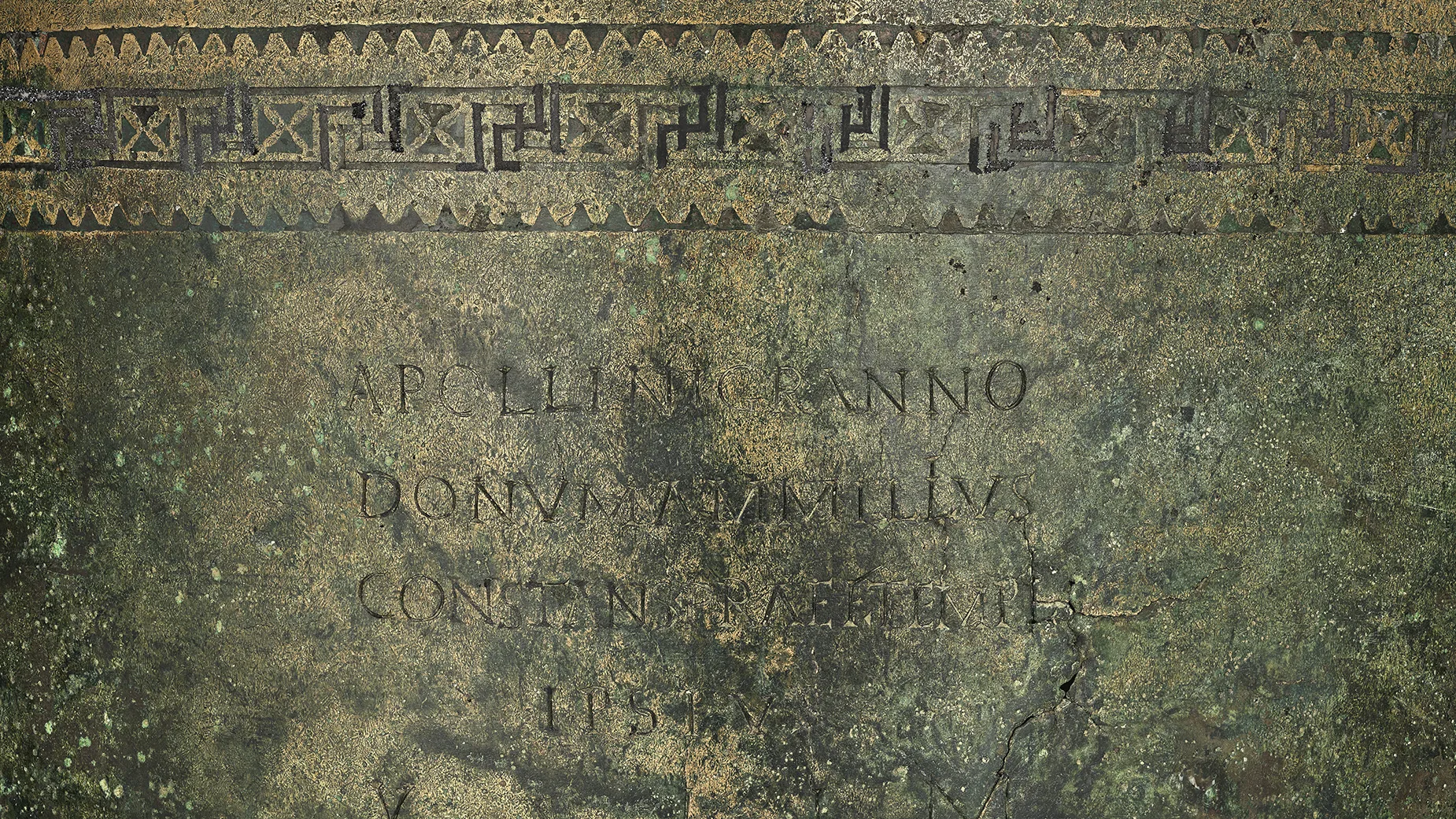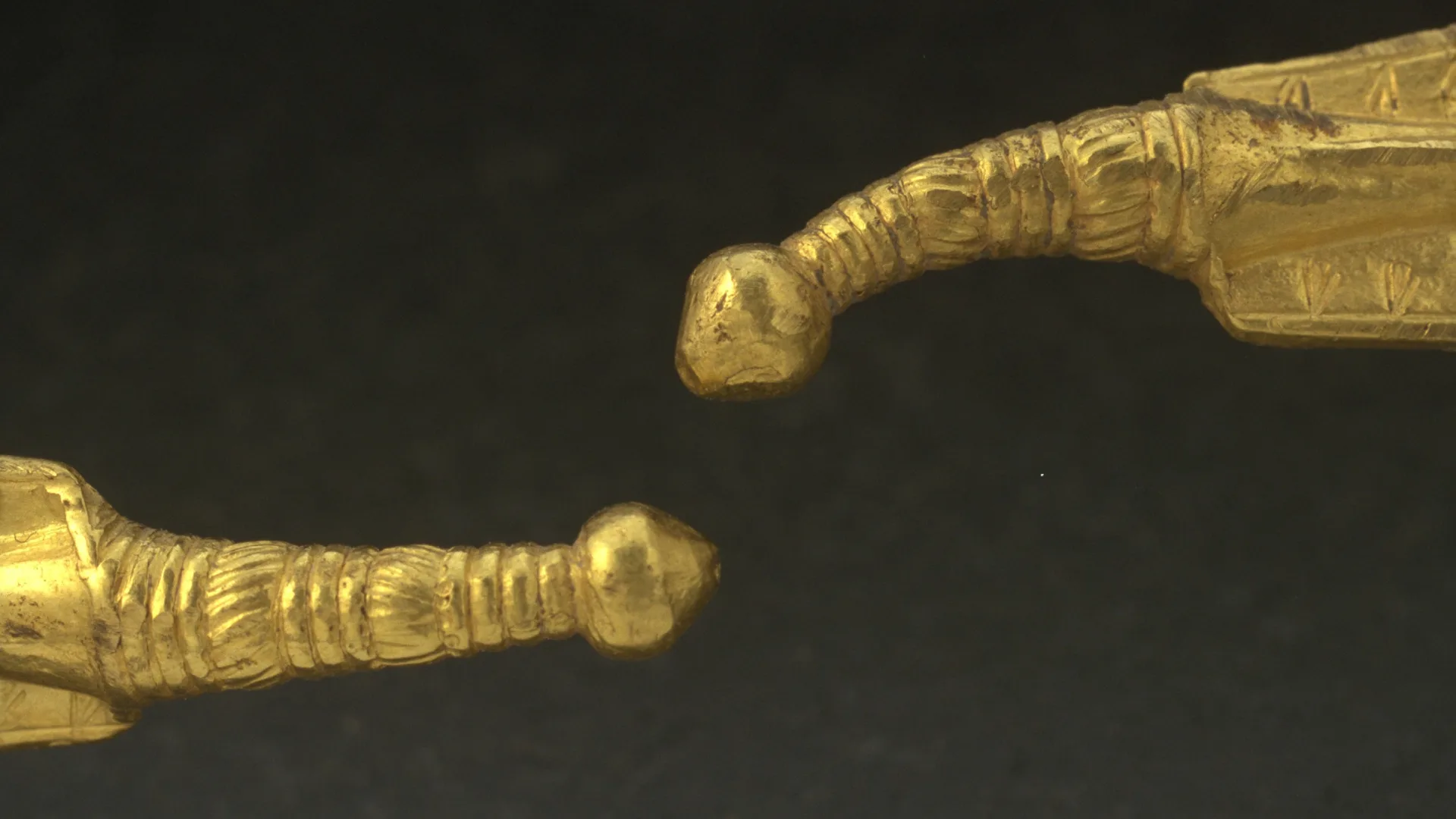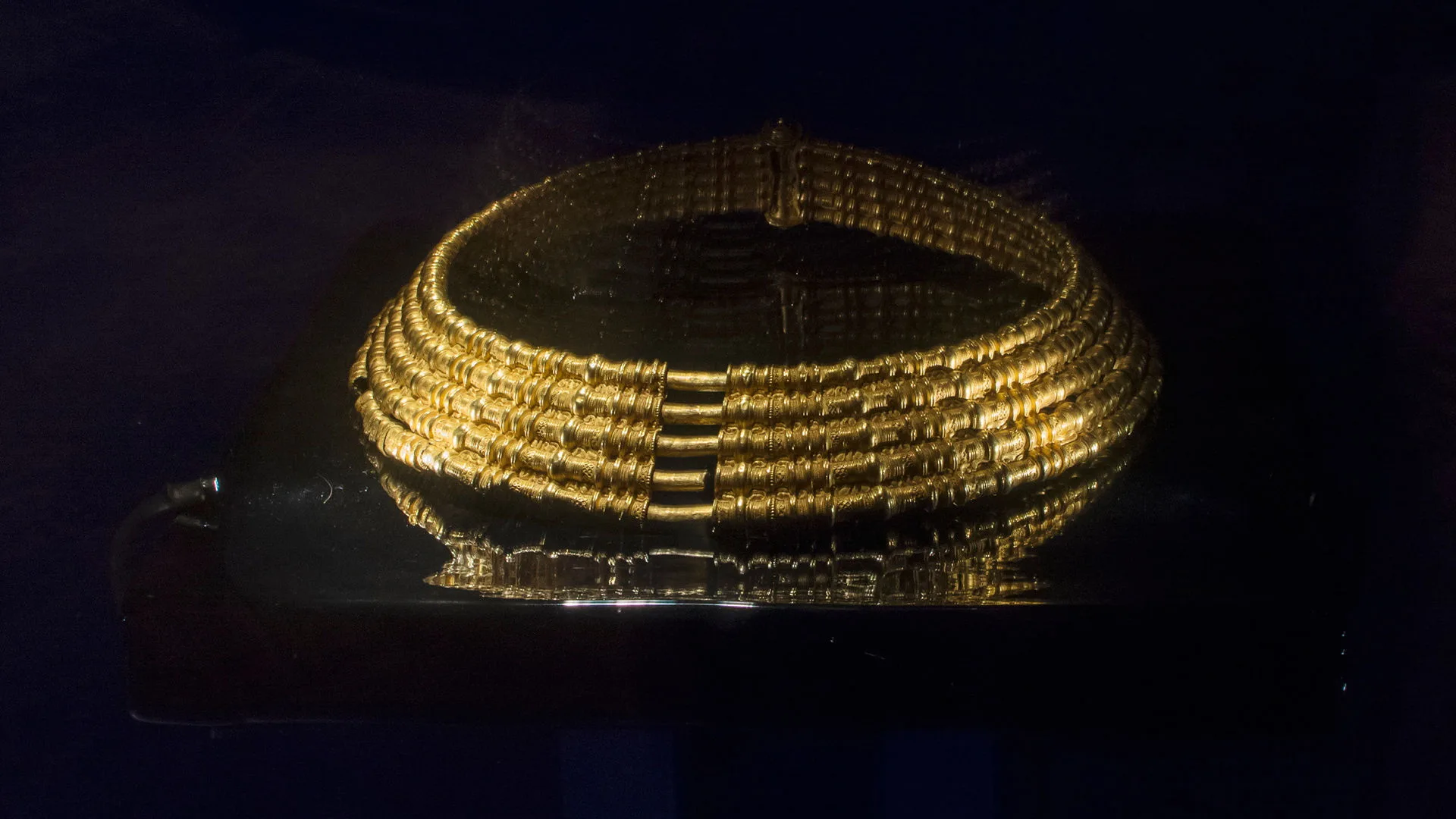Import from the Roman Empire
Bronze Age
1700 BC – 500 BC
Iron Age
500 BC – AD 1100
Viking Age
AD 800 – AD 1100
In some cases, these objects arrived through trade and exchange. In others, they may have been the spoils of war and plunder, personal journeys by individuals from the north, or even diplomatic gifts from the Romans. This glass drinking horn was manufactured within the Roman Empire but was discovered in a rich warrior grave in Östergötland.
In Iron Age Scandinavia, drinking together was a vital social act—used to forge and affirm bonds of friendship and allegiance. During the Roman Iron Age, it became the height of fashion to offer drinks in glass vessels imported from the Continent. The effect was even more impressive if the drink was poured from a Roman jug using a Roman ladle and strainer. This is a clear example of how exotic items were absorbed into local customs.

Glass drinking horn
On view at Historiska museet in the exhibition Forntider 1
People in the north were evidently fascinated by this style of drinking. Among the social elite, it became highly desirable to acquire Roman drinking objects. However, complete drinking sets were extremely rare.
In fact, only one complete set is known from present-day Sweden. It was discovered in Öremölla, in Skivarp parish, Skåne.
The set includes a large bronze vessel used for storing the drink, a ladle and strainer to serve it, and finally, two glass cups—the jewels of the service. One glass is almost entirely intact, while the other survives in fragments. The glass itself is exceptionally clear, indicating the work of highly skilled craftsmen. A locally made clay bowl was also included, complementing the imported set.

Drinking utensils
On view at Historiska museet in the exhibition Forntider 1
An influential individual
At the time, achieving such clarity in glass was nearly impossible, it was exceptionally difficult to remove the natural colouration from the raw material. The decoration on the glasses consists of rows of engraved ovals. Glass of this quality was made in the eastern Mediterranean. The Öremölla glasses were likely blown in workshops in Syria or Egypt, or possibly even in Rome itself, by Syrian artisans.
The person buried with this extraordinary drinking set must have been highly influential, someone with a wide-reaching network. Perhaps he had travelled to Roman territories and learned the art of drinking Roman-style firsthand.
Drinking as diplomacy
One particularly interesting detail in the Öremölla grave is that the set includes two glasses. This clearly suggests that the deceased was meant to drink with someone, even in death. The glasses may symbolise the deceased’s ability to build alliances and confirm them by sharing a drink with his counterpart.
The Öremölla grave is dated to around AD 150–200, making the glasses among the oldest glass drinking vessels found in Sweden.






